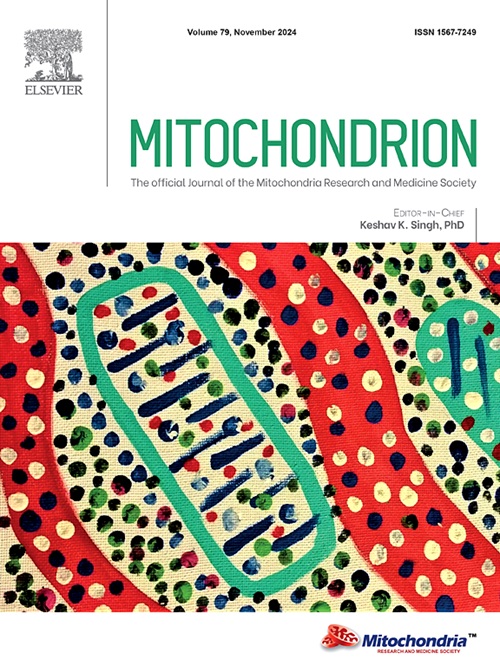Therapeutic potential of DDQ in enhancing mitochondrial health and cognitive function in Late-Onset Alzheimer’s disease
IF 4.5
3区 生物学
Q2 CELL BIOLOGY
引用次数: 0
Abstract
Alzheimer’s disease (AD) is a neurodegenerative disorder characterized by cognitive decline, mitochondrial dysfunction, and neuroinflammation. This study evaluates the therapeutic potential of DDQ, a small molecule in the humanized Abeta knockin (hAbKI) mice that represents late-onset AD. Our findings demonstrate that DDQ treatment significantly improves cognitive performance as assessed through behavioral tests, including the rotarod, open field, Y-maze, and Morris water maze, compared to untreated hAbKI mice. At the molecular level, DDQ promoted mitochondrial biogenesis, as evidenced by enhanced expression of key proteins like PGC1α, NRF1, and TFAM. Additionally, DDQ treatment facilitated mitophagy, as indicated by elevated levels of PINK1 and Parkin, and reduced neuroinflammation, reflected by decreased Iba1 and GFAP levels. Transmission electron microscopy analysis revealed a marked improvement in mitochondrial morphology, with increased mitochondrial length and reduced mitochondrial numbers in DDQ-treated mice. Furthermore, DDQ treatment led to an increase in mitophagic vacuoles, suggesting that it effectively removes dysfunctional mitochondria. Taken together, for the first time, our study results support the potential of DDQ as a promising neuroprotective agent for late-onset AD, addressing mitochondrial dysfunction, neuroinflammation, and cognitive decline. Our study focused on developing small molecules that modulate mitophagy, mitochondrial dynamics and neuroinflammatory pathways for aging, AD and other neurodegenerative disorders.
DDQ在提高晚发型阿尔茨海默病线粒体健康和认知功能方面的治疗潜力
阿尔茨海默病(AD)是一种以认知能力下降、线粒体功能障碍和神经炎症为特征的神经退行性疾病。这项研究评估了DDQ的治疗潜力,DDQ是一种小分子,在人源化Abeta敲入蛋白(hAbKI)小鼠中代表晚发性AD。我们的研究结果表明,与未治疗的hAbKI小鼠相比,DDQ治疗显著改善了认知表现,通过行为测试评估,包括旋转道路、开阔场地、y迷宫和莫里斯水迷宫。在分子水平上,DDQ促进了线粒体的生物发生,如PGC1α、NRF1和TFAM等关键蛋白的表达增强。此外,DDQ治疗促进了线粒体自噬,如PINK1和Parkin水平升高所示,并减少了神经炎症,如Iba1和GFAP水平下降所反映。透射电镜分析显示,ddq处理小鼠线粒体形态明显改善,线粒体长度增加,线粒体数量减少。此外,DDQ治疗导致有丝分裂空泡增加,表明它有效地去除功能失调的线粒体。综上所述,我们的研究结果首次支持DDQ作为迟发性AD的有希望的神经保护剂的潜力,解决线粒体功能障碍,神经炎症和认知能力下降。我们的研究重点是开发调节线粒体自噬、线粒体动力学和衰老、AD和其他神经退行性疾病的神经炎症途径的小分子。
本文章由计算机程序翻译,如有差异,请以英文原文为准。
求助全文
约1分钟内获得全文
求助全文
来源期刊

Mitochondrion
生物-细胞生物学
CiteScore
9.40
自引率
4.50%
发文量
86
审稿时长
13.6 weeks
期刊介绍:
Mitochondrion is a definitive, high profile, peer-reviewed international research journal. The scope of Mitochondrion is broad, reporting on basic science of mitochondria from all organisms and from basic research to pathology and clinical aspects of mitochondrial diseases. The journal welcomes original contributions from investigators working in diverse sub-disciplines such as evolution, biophysics, biochemistry, molecular and cell biology, genetics, pharmacology, toxicology, forensic science, programmed cell death, aging, cancer and clinical features of mitochondrial diseases.
 求助内容:
求助内容: 应助结果提醒方式:
应助结果提醒方式:


